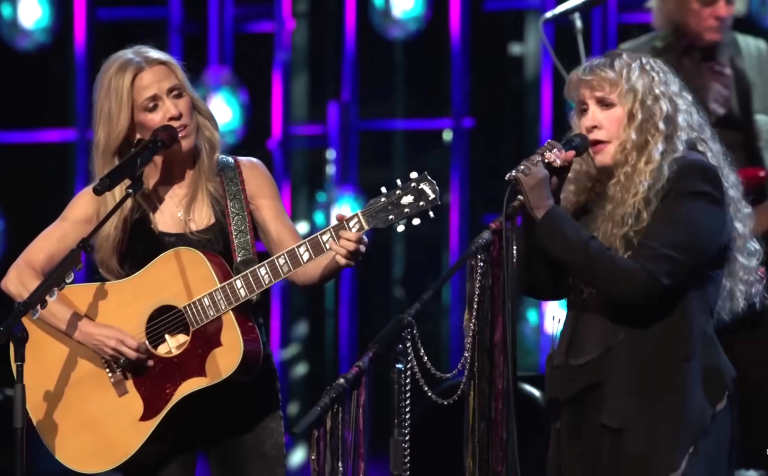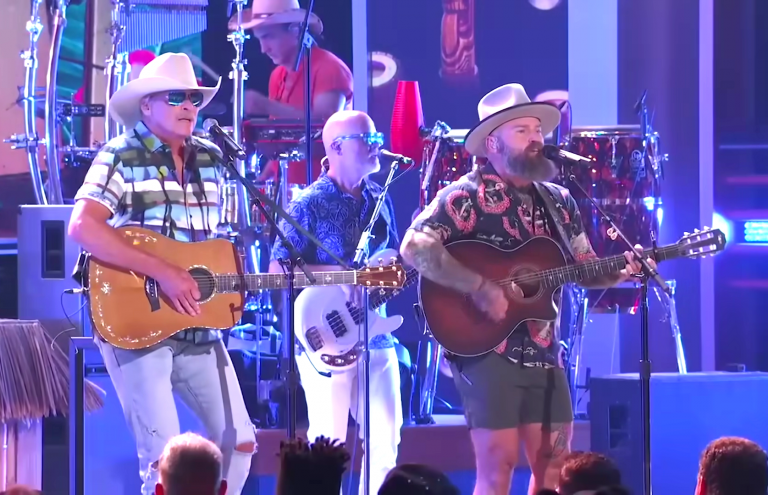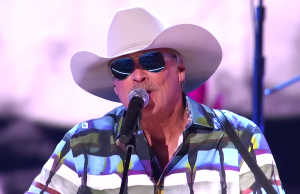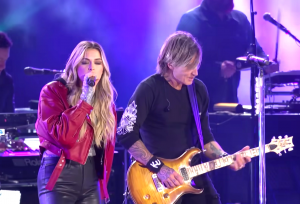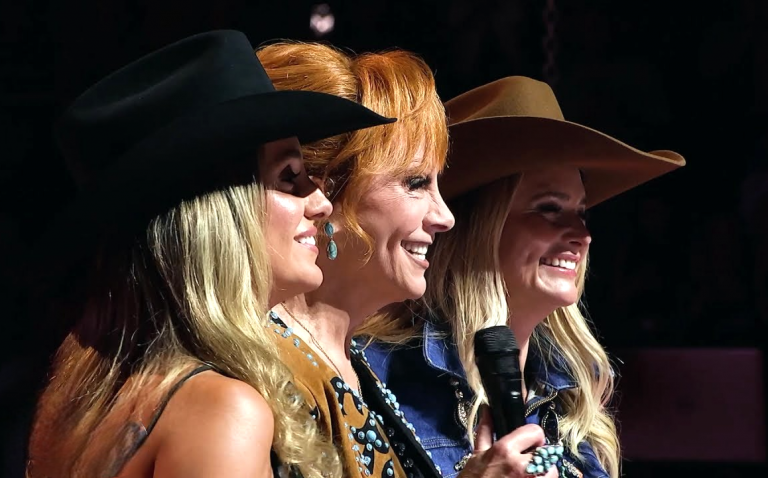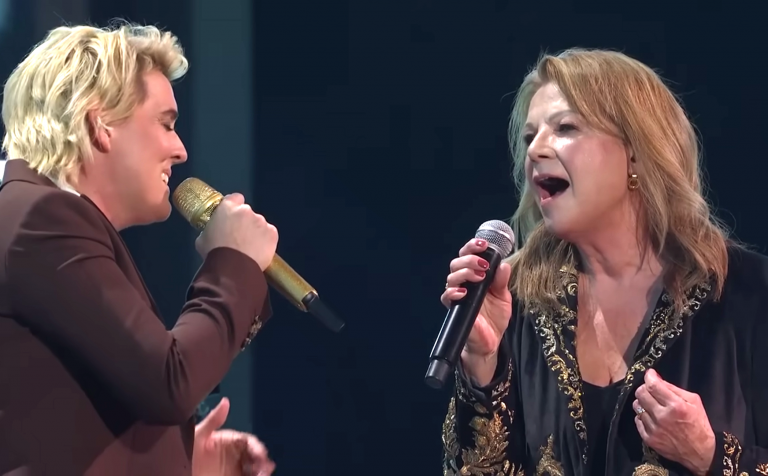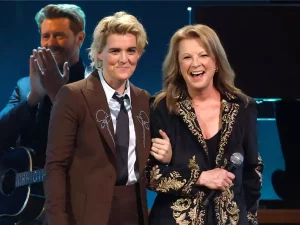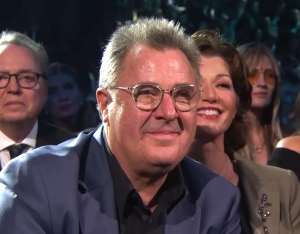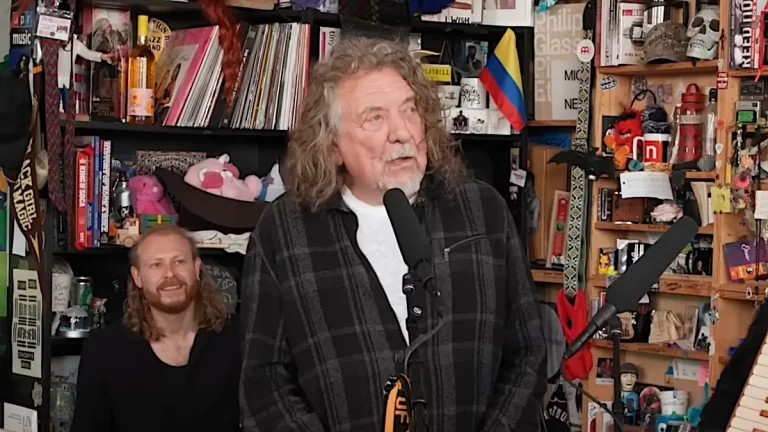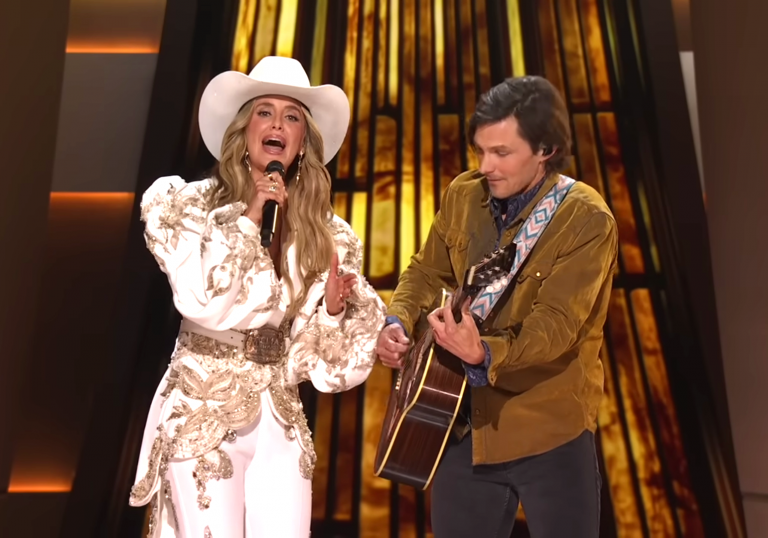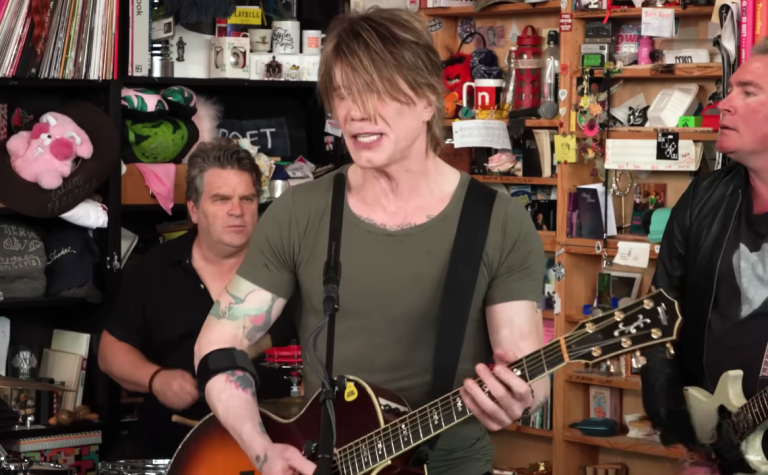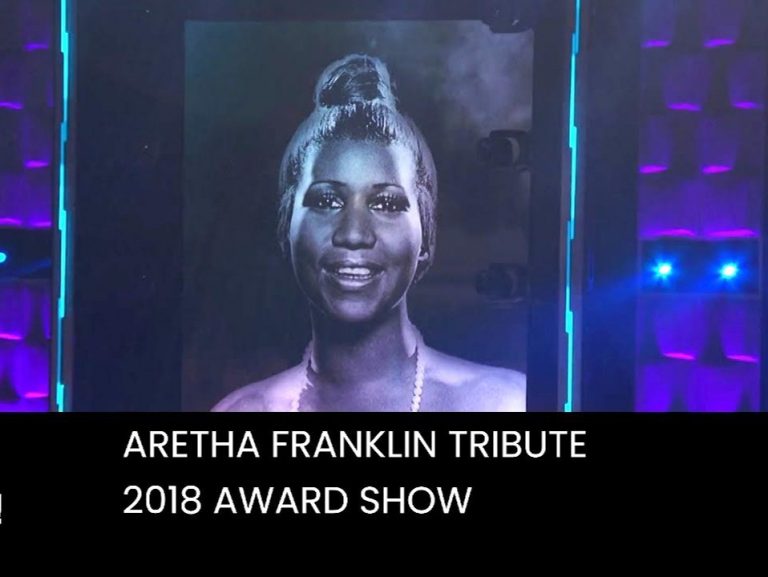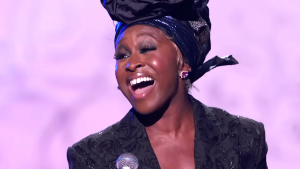Sheryl Crow created a truly unforgettable moment when she took the stage with two music legends—Stevie Nicks and Peter Frampton—for a powerful performance of her classics “Strong Enough” and “Every Day Is a Winding Road.” The performance began with a warm, glowing stage setup, soft golden lights shining behind the band as Crow stepped forward with her acoustic guitar.
She looked relaxed and joyful, smiling at the crowd before strumming the gentle opening chords of “Strong Enough.” Her voice carried that familiar blend of warmth and vulnerability, and Stevie Nicks joined her on the first harmony line, adding her signature raspy, mystical tone.
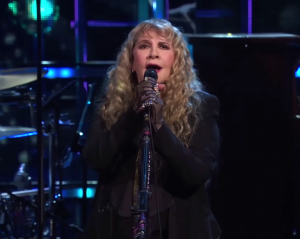
The two voices blended beautifully, creating a rich, emotional sound. As the song continued, Peter Frampton added delicate electric-guitar fills in the background—smooth slides, clean notes, and light touches that gave the performance a soft, dreamy texture. Crow and Nicks exchanged smiles several times, showing their real friendship and mutual respect. By the final chorus, the crowd could be heard cheering louder, especially when Nicks took a brief harmony line on her own, giving the song a fresh twist.
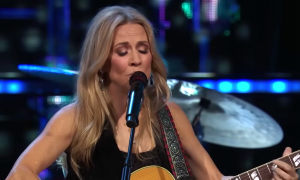
Without pausing for long, the band shifted into the upbeat rhythm of “Every Day Is a Winding Road.” The drums kicked in with a tight, steady groove, and Crow switched to a more energetic stance, moving across the stage and encouraging the crowd to clap along. Frampton stepped forward this time, playing bright, expressive guitar riffs with his unmistakable tone—clean, melodic, and full of character. At one point, he shared a playful musical moment with Crow, leaning toward her as they played side by side.
Stevie Nicks added background vocals throughout, her voice weaving through the chorus and giving the song an extra layer of energy. The three artists looked completely in sync—smiling, laughing, and clearly enjoying the chance to share the stage.
The lighting shifted to vibrant blues and purples, matching the upbeat feel of the track. Near the end, Frampton delivered a short but impressive guitar solo, filled with bends and smooth phrasing, which drew huge cheers from the crowd. The performance closed with all three singing the final line together, ending on a strong, unified note.
It was a rare and special collaboration—three legendary artists bringing their unique styles together, honoring each other, and filling the stage with pure musical joy. The combination of heartfelt harmonies, joyful energy, and standout guitar moments made this performance one to remember.

